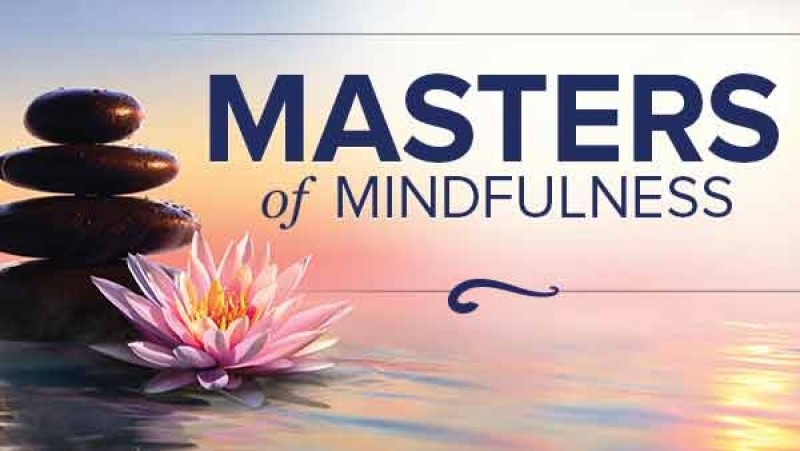An instant and easy guide to learn and begin your own mindfulness practice within the least possible time. It’s smart and effective, and yet short and simple. Once you master this into a behavior (in around 66 days), you may start mini-workshops to teach this Mindfulness In 7 Steps strategy to others.
Meditation is a mental training to increase the ability to target your attention, and control your feelings. There are many ways to meditate. Mindfulness meditation is one of these.
Through the entire existence of humans, since thousands of years, people have used mindfulness ways to build awareness into the present second with calm acceptance – to deal with the stressful areas of life. The Buddhist teachers methodically codified it as a practice of meditation.
One thing, not all mindfulness is meditation. And you don’t will have to meditate to apply mindfulness. You can also practice mindfulness without meditating – as conscious eating, walking, and tuning in.
MINDFULNESS AND BEING MINDFUL
At its simplest, when thoughts and emotions arrive in your brain, nevertheless, you let them pass without getting overly enthusiastic, you’re in mindfulness. It means you are watching, and conscious of, what’s happening around you and inside you. Being conscious has been into circumstances of focused knowing of the present minute, dragging your brain away from the near future and days gone by..
But we absolutely must put in a little more to that definition: While you’re curiously alert to your passing thoughts, you must make sure you’re examining them without the judgment.
GREAT THINGS ABOUT MINDFULNESS PRACTICE
mindfulness for anxiety can help you get rid of the edginess from your mind. A normal practice of mindfulness meditation reduces stress, anger outbursts and over-thinking, and rises self-awareness, fulfillment and contentment. Among other benefits, studies have showed decidedly that folks who practice mindfulness have:
improved their health insurance and overall standard of living,
reduced their anxiety and depression,
increased their concentration, and
achieved more robust ability to deal more effectively with day-to-day stresses.
There are scientific proofs to its effects. A minimum of 21 brain check studies on the a decade have disclosed that long years of mindfulness practice reshapes our brain structure – especially the medial prefrontal cortex (MPFC), the right anterior insula (RAI) and the rostral anterior cingulate cortex (ACC).
Studies also showed that while long-term stress shrinks our hippocampus (storage area centre of brain), mindfulness training rises grey-matter density in the same area. Come to think about it, the positive changes it results in are occurring at our brain levels, which is extraordinary.
Mindfulness in 7 Steps:
Step 1.
Take a deep breath and relax, with your sight open or closed.
Be aware of sounds around you arriving and going, and let them be whatever they can be. Keep taking and releasing slow, deep breaths.
Step 2.
Close your sight and drop your concerns now, like setting down much bag.
After the meditation, you can pick those up again – if you need to. Recognize that you are allowing yourself this time around to go from worldly worries.
Step 3.
Now focus on your breathing. Bring all of your awareness to the feeling of your deep breathing.
Sense the cool air to arrive and the heated air going out. Have the upper body rising and slipping, the belly increasing and contracting. Don’t try to control your breathing; allow it be whatever it is, streaming in and out of its.
Step 4.
Start counting your breaths softly – count from one to 10, and then start over. Start again in one if you see you overlooked the sequence before reaching amount ten, because your brain had wandered.
It’s normal for your brain to wander. So when it can, just go back to counting the breaths again from the start. Be soothing on yourself, letting go of all self-criticism.
Step 5.
Get increasingly more absorbed in your respiration. Start to spot the volume, speed, ambiance and audio of the breathing going in and out of your nostrils.
Once your brain settles down during the first short while, you will see it easier to concentrate on mid-air as it trips more deeply, in through the wind-pipe and into your lungs, and back out again. Open up your whole awareness to the easy process of respiration.
Step 6.
Now, bring your attention to the existence of the thoughts that are moving through your brain, trying to draw your attention from your breathing. Take notice of them. That is the main step.
Let yourself be aware of those thoughts and feelings, wishes and programs, images and memories. Your streams of thoughts will keep alluring your brain from your breathing. Tell yourself: I’m noticing my thoughts, yet I’m not getting overly enthusiastic by them. As Russ Harris says, “First, mindfulness is an activity of consciousness, not thinking.”
Don’t get swept up or fascinated in them to get started on thinking yourself away. But also, don’t struggle with them. The theory is to sit with your ideas and let them be whatever they are simply. Primarily, just notice their impermanence as they finally fade off. And yet produce an attitude of popularity toward those free-flowing thoughts. Every time you capture yourself being dragged away by a thought, lightly bring back your concentrate to your breath – again and again.
Step 7.
Feel an evergrowing sense of peacefulness within as you keep settling into the breath with an increase of focus.
Notice how it feels to get swept up in the passing articles of awareness-and how it feels to let them pass. Be aware of peaceful recognition itself. Once you’re there in the status of peaceful understanding, you may opt to sit in that talk about for as long as you want. Finally, you may bring the meditation to a finish by starting your eyes, stretching out your hands and getting up.
FINAL WORDS
Now that you’ve learnt these eight easy steps, it’s time to invite mindfulness into your lifestyle. You’ll do yourself a world of good with just 10 minutes out of your 24-time.
It will boost your happiness levels, better your sociable interactions, and build your immunity. Mindfulness practice reduces stress and anxiety, stress and pain-perception. It’ll make you more compassionate and attentive. Some say it will increase your life-span.
So, start the practice today. And make to instruct others in your community the same easy and effective method by keeping mini-workshops.




